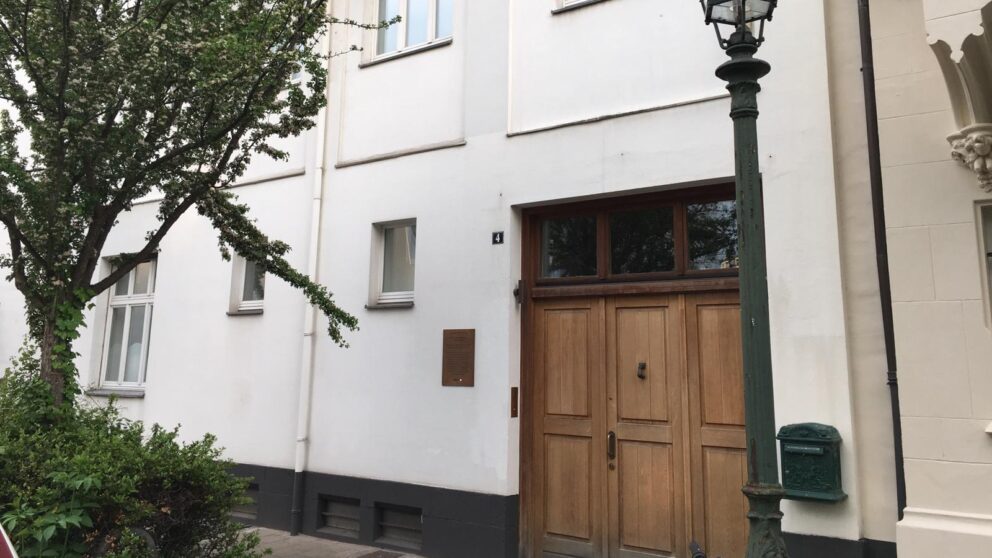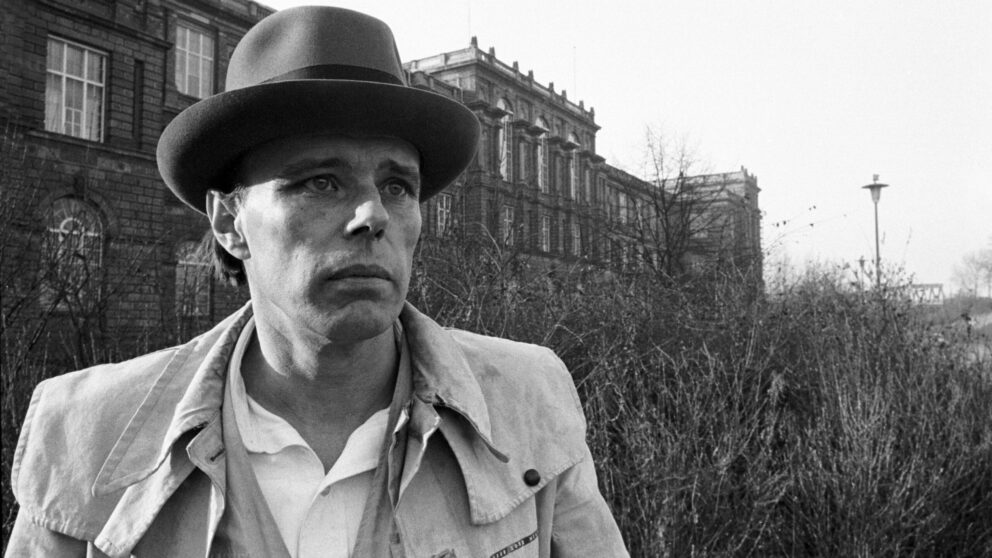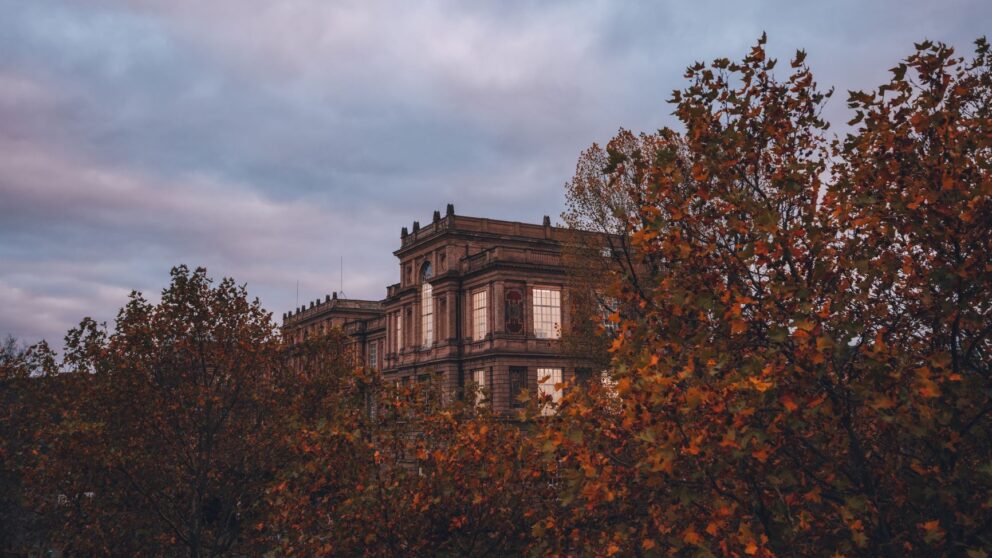
Beuys in Düsseldorf #3
100 years Joseph Beuys
The NRW Art Collection
Anyone traveling in Düsseldorf automatically follows in the footsteps of Joseph Beuys. The world artist led a public life in the city, his paths and places are well documented. At Grabbeplatz, in front of the Kunsthalle, his student Anatol hollowed out the dugout canoe for the joint crossing of the Rhine. Across the street, at K20, the most important posthumous exhibitions are regularly on view: in 2010/2011 "Joseph Beuys. Parallel Processes" and now, on the occasion of the 100th anniversary of his birth, "Everyone is an Artist - Cosmopolitan Exercises with Joseph Beuys". Gerrit Terstiege took a look around the permanent collection for us at K20 - a Beuys show without a time barrier.
Black, curved granite: With sovereign elegance, the facade of the Kunstsammlung NRW characterizes Düsseldorf's Grabbeplatz. A strange twist of fate meant that Joseph Beuys and that great museum dedicated to 20th-century art practically took turns: in 1986, the year of Beuys' death, the building was opened by the then Federal President Richard von Weizsäcker. That was only a few weeks after the artist's death - and perhaps even had something comforting for some.
Palazzo shelves fills a whole room
In addition to many major works of modernism, from Paul Klee to Max Ernst to Jackson Pollock, the art collection naturally includes central works by Joseph Beuys. Perhaps the most important fills an entire room: "Palazzo Regale" ("Royal Palace") from 1985: seven brass panels coated with gold varnish hang on the walls like pictures and yet are more like blind mirrors that correspond with two massive display cases, for Beuys also had their cubic frames built of brass. At first glance, the objects gathered in them seem to have been placed in them casually, and yet they have been selected with care. They are unquestionably closely related to the natural and man-made objects that often enter into dialogue in the artist's work and appear as if transformed by him.
But the Kunstsammlung NRW also owns a very small, less consecrated, even funny work by Beuys: the "Capri Battery," in which he simply inserted the integrated plug of an angled light bulb socket into a lemon. The screwed-in light bulb, round, opaque and bright yellow, seems here like the artificial counterpart to the tropical fruit. But when you know that citric acid can be used to generate electricity, it becomes clear what Beuys was actually after: a symbol for nature as a source of power.
Where Warhol photographed Beuys
By the way, "Jest, Satire, Irony and Deeper Meaning" is the name of the playwright Christian Dietrich Grabbe's most successful play to date, after whom the square in front of the Kunstsammlung was named - all of which are possible interpretations for Beuys' small "Capri Battery" as well. And there is something else that connects Grabbeplatz with the artist. Directly across from the K20 - the museum's handy abbreviation - he met Andy Warhol in 1979 in the rooms of Hans Mayer's gallery. A now legendary meeting of two dissimilar artists, in the middle of Düsseldorf. It is documented that Warhol asked Beuys, quite shyly, "May I take your picture?" -He was allowed.
Text: Gerrit Terstiege
Gerrit Terstiege writes for magazines like art, Monopol or Mint and always enjoys writing about art and music from Düsseldorf.
Photos Gallery: Everybody is an artist, Kunstsammlung Nordrhein-Westfalen, 2021, Photo: Achim Kukulies
Photo cover: Düsseldorf Tourism
For more on Beuys, see our Beuys special.






